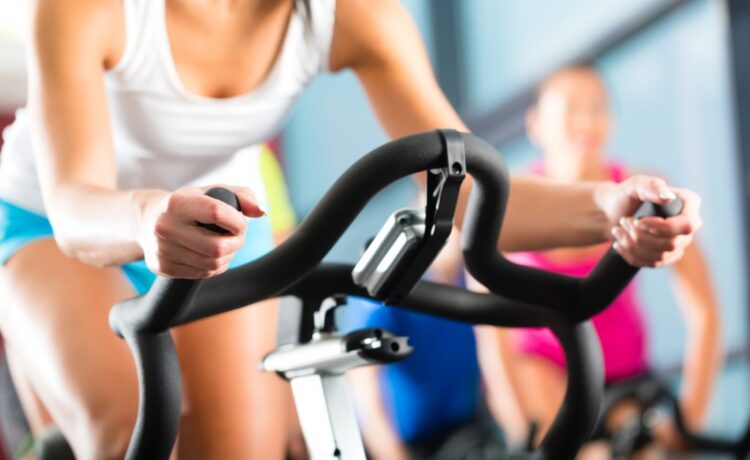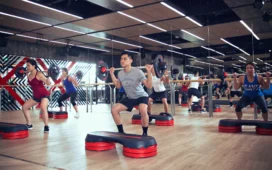If you’ve ever stepped into a studio for indoor cycling Singapore, you’ve likely been hit with thumping basslines, energetic pop beats, and instructors shouting cues in sync with the music. It’s not just for show—music plays a pivotal role in shaping your cycling performance and experience. In fact, it’s one of the biggest reasons why people return to these high-energy classes week after week.
Singapore’s indoor cycling scene isn’t just about pedalling hard. It’s about moving in rhythm, building endurance, and letting music push you past your perceived limits. The soundscape, song structure, and beats per minute (BPM) all work together to support the physical effort. With fitness studios like TFX offering immersive sound-driven sessions, it’s easy to see how music transforms cycling into a full-body, emotional experience.
The Science Behind Music and Performance
Music has a direct effect on the brain and body. When you cycle to the beat, your brain synchronises movement with rhythm, which not only makes pedalling feel more natural but also more efficient. This is called auditory-motor synchronisation. Studies have shown that listening to music during cardio workouts can reduce perceived exertion by up to 10%, allowing you to push harder without feeling as fatigued.
Faster music encourages quicker pedal turnover, while slower beats are ideal for recovery or uphill climbs. This is why indoor cycling playlists are carefully curated—not just to entertain, but to physiologically guide you through the workout.
What Makes Music-Driven Cycling Special in Singapore
Singaporeans are no strangers to diverse musical tastes. Indoor cycling classes here tap into everything from K-pop and Bollywood remixes to EDM, hip-hop, and local hits. Music doesn’t just keep the energy high; it creates a shared cultural experience in the studio. When a familiar tune plays mid-session, it ignites enthusiasm and camaraderie among riders.
The multilingual nature of Singapore also reflects in playlist selections, often blending English, Mandarin, Malay, and Tamil tracks. This diversity adds an inclusive element, ensuring that every rider, regardless of background, feels represented and engaged.
Structuring a Ride Around Music
Each indoor cycling session is structured like a musical journey. It starts with a warm-up—typically a lower BPM track—to ease riders into the ride. As intensity builds, the BPM climbs to match faster sprints or steep hill intervals. The session then peaks with a high-energy anthem before tapering off with a cooldown track.
Here’s how a typical rhythm-based ride might flow:
- Warm-up: 100–110 BPM for light resistance and cadence regulation
- Speed intervals: 120–140 BPM for sprint bursts
- Climbs: 110–120 BPM for heavy resistance and steady tempo
- Cooldown: 90–100 BPM for light cycling and breathing recovery
This musical structure helps maintain consistency and encourages natural pacing. Riders aren’t just reacting to the instructor—they’re responding to the beat itself.
How Music Enhances Group Motivation
One of the most powerful aspects of indoor cycling is the collective energy in the room. Music acts as the glue that binds everyone. When 20 riders are moving in sync to the same track, it builds a rhythm that fuels determination and pushes you beyond your individual limit.
Singapore’s cycling studios often amplify this with intelligent lighting synced to the beat, creating a club-like atmosphere. The pulsing lights, instructor cues, and collective movement create a flow state—a mental zone where effort feels fluid and motivation peaks.
In this state, even a 45-minute class can fly by. You become immersed in the experience rather than fixated on fatigue or time.
Creating Your Own Indoor Cycling Playlist
If you prefer doing spin sessions at home or want to supplement studio rides, building a personal playlist can be both fun and effective. Here are some guidelines:
- Choose tracks between 100–140 BPM
- Start with low-BPM songs for warm-up and cooldown
- Alternate high-BPM tracks for sprint efforts and moderate-BPM ones for recovery
- Add songs you personally enjoy—it increases motivation and emotional connection
- Rotate playlists weekly to keep your sessions fresh
Some popular music choices among Singapore cyclists include:
- “Blinding Lights” by The Weeknd (high BPM, great for sprints)
- “Rather Be” by Clean Bandit (ideal for steady climbs)
- “Uptown Funk” by Bruno Mars (fun, high-energy)
- Local remixes from DJ collective tracks or Mandopop for a personal touch
Why Instructors Are Part DJ, Part Coach
Cycling instructors in Singapore often spend hours curating the perfect playlist. It’s not about random song selection—it’s about designing a rhythm cycle that delivers a physiological and emotional high.
They time motivational cues with the beat drop, push intensity as the music builds, and ease tension with softer transitions. Their role involves reading the energy of the room and adjusting the playlist flow accordingly. That’s why no two rides ever feel the same.
At studios like TFX, instructors are trained to master this dual role of coach and musical conductor, ensuring a peak experience that keeps members coming back consistently.
How Music Affects Mental Focus and Stress Relief
Beyond the physical, music in indoor cycling helps riders escape mental clutter. In Singapore’s high-pressure environment, where work-life balance is often a challenge, 45 minutes of immersive music-led cardio can feel like a form of meditation.
The rhythm provides a focal point, allowing riders to zone out from stress and zone in on movement. Many cyclists report leaving sessions feeling mentally refreshed and emotionally lighter. This “moving mindfulness” is a key benefit often overlooked in traditional cardio routines.
Tips for Maximising the Music Experience in Class
To truly benefit from music-driven indoor cycling, keep the following in mind:
- Arrive early and set up your bike correctly—comfort improves focus
- Position yourself where you can hear the speakers clearly
- Don’t wear earphones—follow the studio’s sound system and the instructor
- Be open to new genres—expanding musical tastes can enhance your rides
- Let go and enjoy the rhythm—don’t worry about looking perfect
Frequently Asked Questions
Q: Does the type of music really affect cycling performance?
A: Yes. Music impacts mood, energy levels, and pacing. Upbeat tracks can increase cadence and motivation, while calm tracks help during recovery phases. The effect is both physical and psychological.
Q: I’m tone-deaf. Can I still benefit from rhythm-based classes?
A: Absolutely. You don’t need musical training. Your body will naturally sync with the beat over time. Just follow the instructor and let yourself ease into the rhythm.
Q: What if I don’t enjoy the music in class?
A: Instructors often rotate playlists to suit different preferences. If a certain genre doesn’t appeal to you, try a different timeslot or instructor to find a better match.
Q: Can I use my own playlist when cycling at home?
A: Yes. Curating your own playlist lets you personalise the experience. Just make sure to balance BPM levels for different stages of your workout.
Q: Is there a difference between rhythm rides and performance rides?
A: Yes. Rhythm rides focus on syncing movement to music, creating a dance-like flow. Performance rides are often more metrics-based. Some studios combine both for variety.







